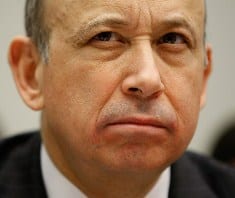Poverty and the American two-party system
Kate Randall, wsws.org
Nearly 50 million people are living in poverty in the United States. This was the dire news delivered eight days after the presidential election in a report from the US Census Bureau.
The new report’s findings—which factor in expenses and government-provided benefits, providing a more accurate picture of US poverty—are a damning indictment of American capitalism. Based on data from 2011, three full years into Obama’s first term, the report is also a commentary on the reactionary character of the administration and its response to the worst economic crisis since the Great Depression.
The shocking news that nearly one in six Americans is living in poverty prompted virtually no comment on network or cable news broadcasts. It was met with silence in Washington, where Democratic and Republican politicians are conspiring to implement draconian cuts to social programs that will throw millions more into the ranks of the poor.
Barack Obama has made a practice of all but excluding the word “poverty” from his political vocabulary, and his first post-election press conference, held the same day as the release of the Census report, was no exception. He felt no need to note the dire growth of poverty as he set the stage for negotiations with the Republicans over a multitrillion-dollar austerity package that will savage basic social entitlement programs such as Medicare and Social Security.
The sharp growth of poverty, homelessness and hunger in America over the past four years is the result not simply of purely economic forces. It is above all the result of a calculated drive to utilize the crisis to lay siege to the living standards and democratic rights of the working class.
Obama’s first term was devoted to protecting and expanding the wealth of the financial-corporate oligarchy at the expense of the vast majority of the population. His second term will be focused on carrying through a historic retrogression, in which all of the gains won by the working class over a century of struggle are to be reversed.
The multitrillion-dollar bailout of the banks on the one side, and the attack on wages, pensions, health care and working conditions on the other—inaugurated by Obama’s wage-cutting restructuring of the auto industry—are to be intensified and combined with an assault on what remains of social welfare programs.
The most significant finding of the Census report is the sharp growth in the ranks of the working poor. The report takes as its starting point the 144 million people who worked full- or part-time year-round in 2011. Some 9.4 percent of these workers—an estimated 13.6 million people—were living in poverty according to the official poverty threshold (which is absurdly low and dramatically underestimates the real number).
Of the 97 million workers working full-time, 5.1 percent—or about 5 million people—lived in poverty. The poverty rate among the estimated 46.7 million part-time workers was a staggering 18.5 percent—or about 8.6 million people.
According to the Census Bureau, more than a quarter of those living in poverty had a job. But they earned so little—either due to low wages, scant work hours or a combination of both—that even if they were able to qualify for some sort of government benefits, they still subsisted below the poverty line.
For those without jobs, the situation was even grimmer. Of these, fully a third were living in poverty. And with the agreement of Obama and Congress, federally funded extended unemployment benefits are set to expire in January, depriving 2 million jobless workers of cash assistance and plunging even more households into poverty.
The Obama administration has implemented no policies to provide jobs for the unemployed or alleviate the suffering of millions of workers, young people and seniors that is brought into focus by the Census report. No measures have been implemented in the wake of the Wall Street crash and economic slump to provide relief to those who have lost jobs, gone into foreclosure or struggled under the weight of medical bills or massive college debt.
Meanwhile, the rich have grown richer and social inequality has soared.
The new poverty statistics should serve as a stark warning. The mythical “American dream” has become a social nightmare. And this is only the beginning. It is not a temporary change. This—poverty wages and brutal exploitation—is the “new normal” under the profit system and the political domination of two parties controlled by the financial aristocracy.
Decent jobs and living standards are incompatible with the “free market” system routinely eulogized by Obama and defended by both parties. The fight for jobs, decent wages, education, health care and housing is a fight against the capitalist system and all of its political defenders. The urgent issue facing working people and youth is the building of an independent mass socialist movement to fight for a workers’ government and the socialist reorganization of economic life.
________________
Kate Randall is a sociopolitical analyst with the World Socialist Web Site.
//



